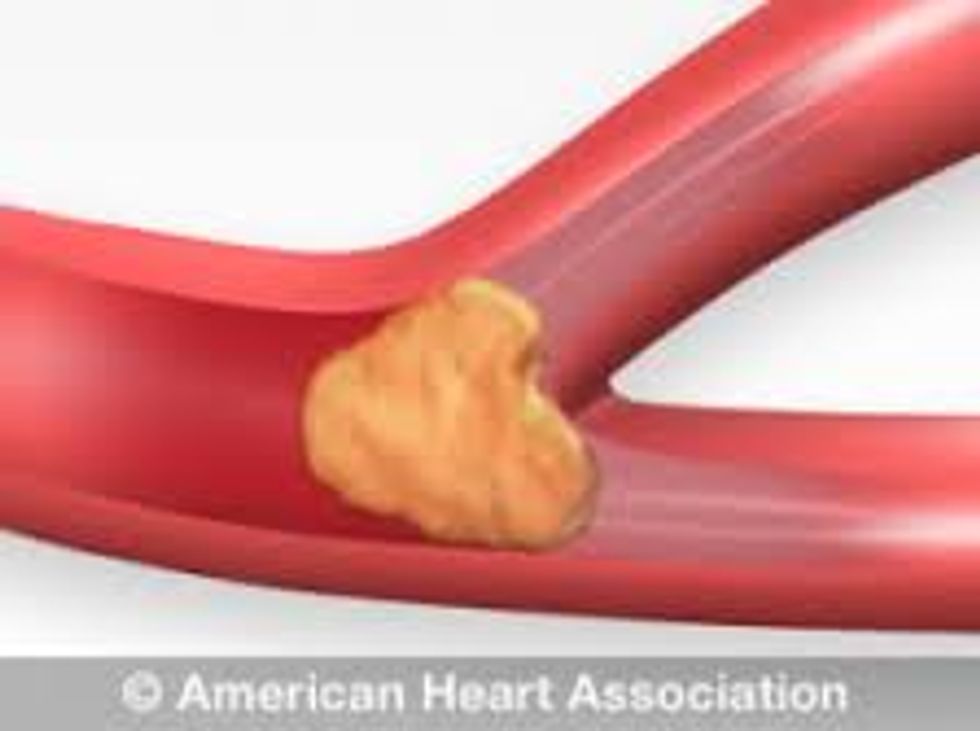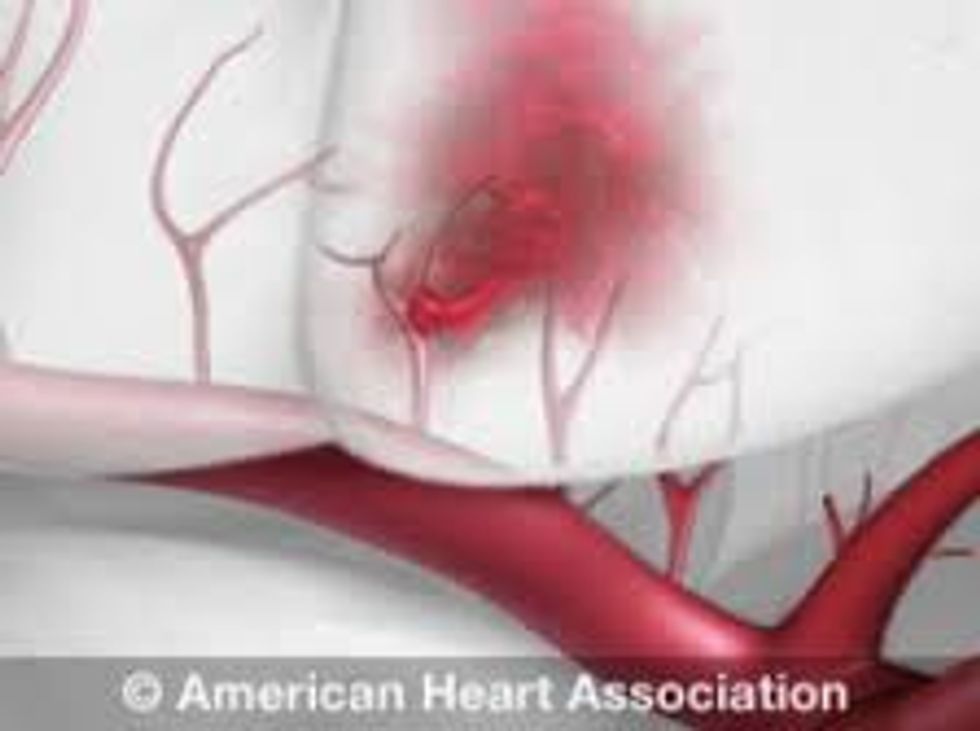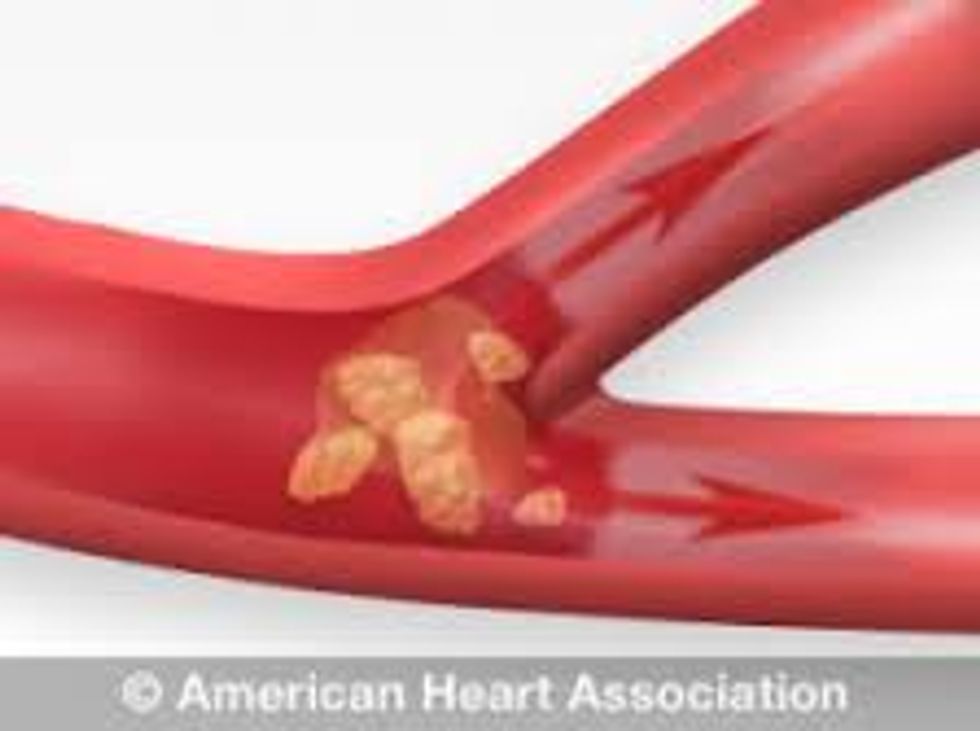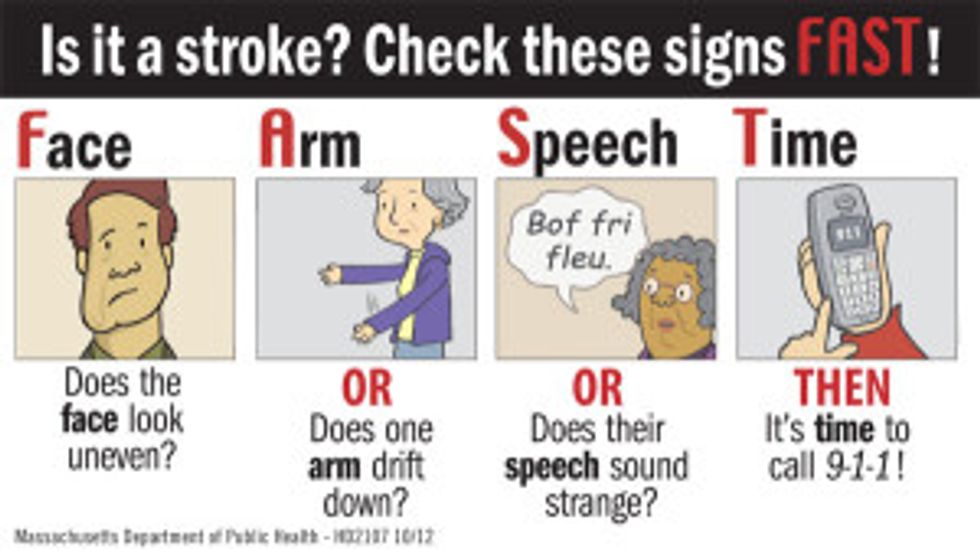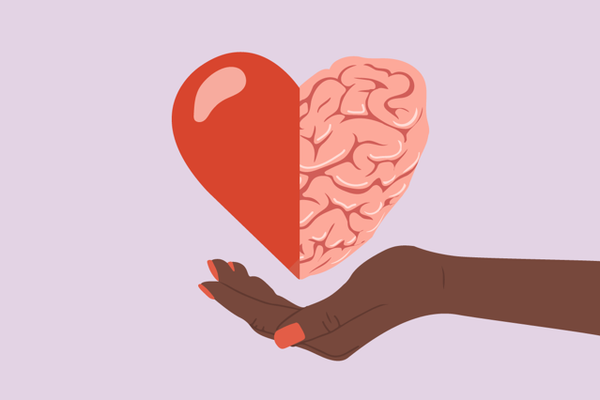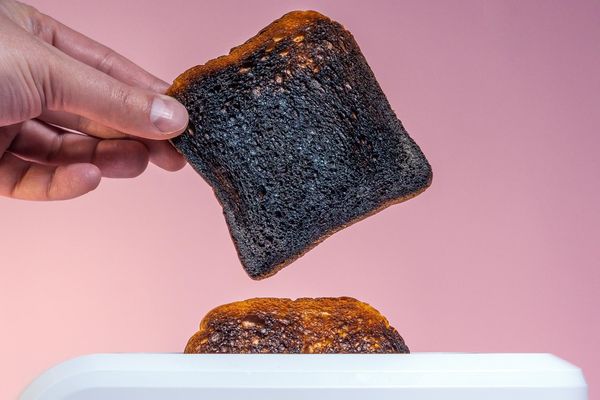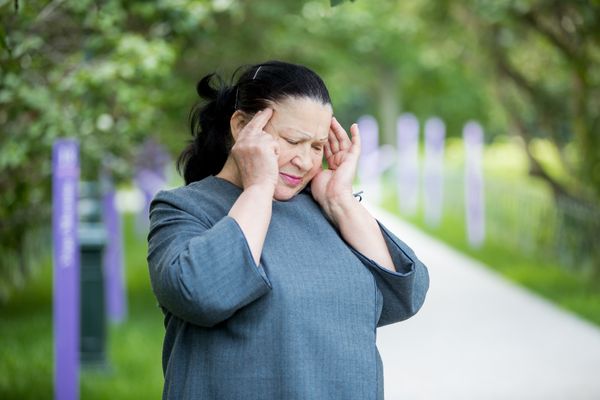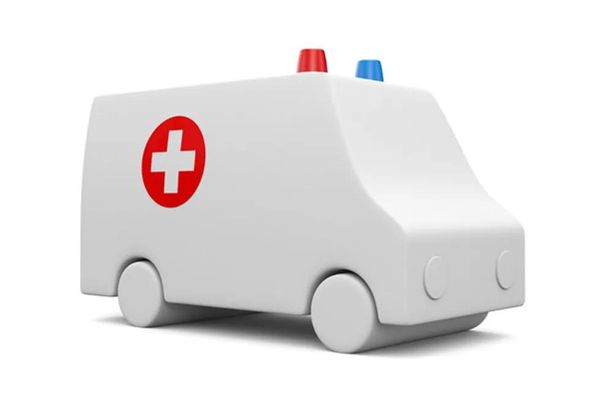When my mom's face started to droop to the left and she couldn't form words, I knew she was having a stroke. It turned out that by acting fast, we were able to minimize the damage and she made a good recovery. Other families are not as lucky.
As we go about our busy lives, sometimes the unexpected happens. Being prepared and knowing what to do, especially around family members who may be at higher risk of stroke, can be lifesaving.
A quick review here can help you understand what the types of stroke are, how they occur, how to recognize them to get help immediately and how to help prevent them.
What is a stroke?
Very simply, a stroke occurs when a portion of the brain is deprived of oxygen, causing brain cells to die.
There are three types of stroke:
1. Ischemic stroke from a clot. This is the most common type and is responsible for 87 percent of strokes.
2. Hemorrhagic stroke from bleeding. This usually occurs when a blood vessel is weakened blood vessel and you have very high blood pressure.
3. Transient ischemic attacks (TIAs). These occur when small blood clots temporarily disrupt the flow of oxygen to the brain cells.
What's the best way to prevent strokes?
Follow your grandmother's advice! For most us that means:
- Eat your vegetables.
- Get outside and exercise.
- Don't smoke.
All of grandma's advice is aimed toward these goals: being healthy; keeping our weight down; avoiding high blood pressure, high cholesterol and diabetes; and not smoking. These are all some of the controllable risk factors for stroke. Boy, our grandmothers were pretty smart.
Controllable risk factors for stroke include:
- High blood pressure
- Atrial fibrillation
- High cholesterol
- Diabetes
- Smoking
- Alcohol use
- Physical inactivity
- Obesity
There are a couple of others that are important to know.
Risk factors for stroke that are not in your control:
- Age. After age 55 the risk of stroke doubles, presumably because the likelihood of high blood pressure and other conditions also increases.
- Gender. We think that women are at increased risk because they tend to live longer and from the influence of the hormone estrogen, which increases the risk of blood clots.
- Race. People of African American, Latino, Asian and Pacific Islander descent have higher risk of stroke than Caucasians.
- Family history of stroke. This is likely related to a history of blood clotting disorders, such as factor V Leiden, high blood pressure and other risk factors.
How to Recognize a Stroke
Remember to Act FAST.
Signs of a stroke
- Face: Is one side of the face or eyelid drooping, numb or weak?
- Arms: Ask the person to lift their arms. Is one lower or weaker than the other?
- Speech: Can the person speak clearly?
- Time: If any of these are present, call 9-1-1 immediately.
Here's the wallet-sized Act FAST for STROKE download you can access for free.
Can you prevent a stroke?
You can start by working on the risk factors that are controllable. You know what that means—following Grandma's advice.
Here's some other lesser known advice:
- If you're a woman on estrogen and going on a long plane ride, talk to your health care professional about whether you need to take a baby aspirin (81 mg) for one week before the trip to help decrease the risk of blood clots forming in the legs, which could possibly travel to the brain. It's important to talk to your own health care professional because baby aspirin could have other side effects that wouldn't be safe for you.
- Keep cholesterol levels low.
- Keep blood pressure in the acceptable range. If you're on blood pressure medication, it only works if you take it.
- Don't smoke. I know I already said this, but it bears repeating. The nicotine causes spasms in the tiny blood vessels in the brain and can lead to loss of oxygen in the brain.
This blog originally appeared on Nurse Barb's Daily Dose. Barb Dehn is a women's health nurse practitioner, award-winning author and nationally recognized health expert. She practices with Women Physicians in the Silicon Valley of California.
- Important Questions You Should Ask Your Health Care Professional About Cardiovascular Disease Prevention ›
- FAQs: What Women Need to Know About Cardiovascular Disease ›
- Is Smelling Burnt Toast a Sign That You're Having a Stroke? ›
- Stroke Symptoms Checklist ›
- I Survived a Stroke at 30 - HealthyWomen ›
- Stroke Risk for Women - HealthyWomen ›
- Riesgo de accidentes cardiovasculares para las mujeres - HealthyWomen ›


